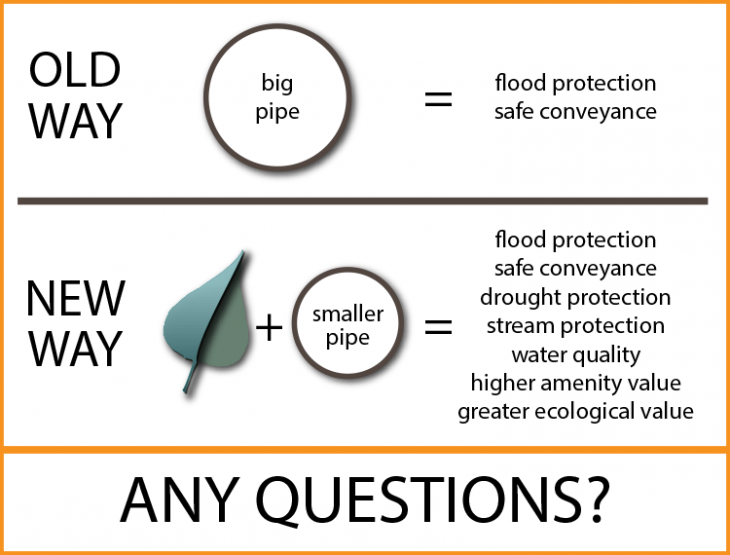What is LID?
The urban landscape may be a concrete jungle, but it doesn’t need to behave like one.
Designers have long known the toll that compacted turf-and-tree landscapes and hardened surfaces like roofs, roads and parking lots take on our lakes, rivers and streams. However, the tools to address these impacts in this complex system have only begun to be developed in the past decade or two.
Green infrastructure, sustainable urban drainage systems, water-sensitive urban design, low impact development…whatever the name, the goal remains the same: a high-performance urban environment from the perspective of our water resources.
So low impact development is really a statement of a desired outcome--the outcome of a holistic approach to urban drainage management.

Low impact development doesn’t just achieve flood protection during extreme rainfall events -- it achieves more -- by considering the entire hydrologic cycle and mobilizing the whole landscape. As a result, cumulative impacts are lessened, the burden on conventional infrastructure is reduced, ecological functionality is maintained or restored, and water supplies are cleaner and more secure.
Taking its cues from the science developed in the field of wastewater treatment over the last century, low impact development uses a toolbox of practices (the treatment train) to achieve its goals. From non-structural measures implemented long before shovel meets soil, to practices during construction, measures that homeowners can take, and public infrastructure, the whole landscape has a role to play.

